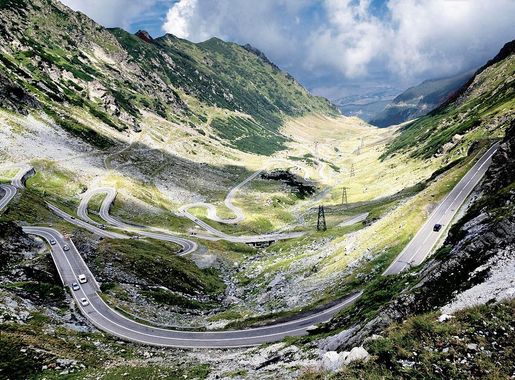
The Winding Wonders of Transfagarasan Highway
Discover the Transfagarasan Highway: A Scenic Drive through Romania's Carpathian Mountains, Offering Thrilling Twists and Stunning Natural Beauty.
The Transfagarasan Highway is a must-see in Romania, winding through the Fagaras Mountains in the Carpathians. Known for its dramatic twists and turns, the highway offers a thrilling drive with breathtaking landscapes. You'll find yourself surrounded by dense forests, serene lakes, and majestic peaks as you navigate this iconic route. Constructed in the 1970s, the Transfagarasan Highway stretches over 90 kilometers and connects the regions of Wallachia and Transylvania. It is often referred to as the 'Road to the Sky' due to its altitude and the otherworldly views it provides. The highway's highest point reaches 2,042 meters at the Balea Lake, a glacial wonder that is a popular stop for travelers. Along the way, you'll encounter several points of interest. The Vidraru Dam, one of the largest in Europe, is an engineering marvel worth a stop. The Poenari Fortress, perched atop a cliff, offers a glimpse into Romania's medieval past and a connection to the legendary Vlad the Impaler. Don't miss the Balea Waterfall, where cascading waters create a spectacular natural display. The Transfagarasan Highway is best traveled during the summer months when the road is fully open and accessible. Winter conditions can make the route challenging, with sections often closed due to heavy snowfall. For the best experience, plan your visit between June and October when the weather is mild and the scenery is at its most vibrant.
Local tips in Transfagarasan Highway
- Visit between June and October when the highway is open and the weather is favorable.
- Stop at Balea Lake for incredible views and a chance to hike nearby trails.
- Bring a camera to capture the stunning landscapes and wildlife along the route.
- Check road conditions before your trip, as weather can impact accessibility.
- Explore Poenari Fortress for a dose of history and panoramic views.
The Winding Wonders of Transfagarasan Highway
The Transfagarasan Highway is a must-see in Romania, winding through the Fagaras Mountains in the Carpathians. Known for its dramatic twists and turns, the highway offers a thrilling drive with breathtaking landscapes. You'll find yourself surrounded by dense forests, serene lakes, and majestic peaks as you navigate this iconic route. Constructed in the 1970s, the Transfagarasan Highway stretches over 90 kilometers and connects the regions of Wallachia and Transylvania. It is often referred to as the 'Road to the Sky' due to its altitude and the otherworldly views it provides. The highway's highest point reaches 2,042 meters at the Balea Lake, a glacial wonder that is a popular stop for travelers. Along the way, you'll encounter several points of interest. The Vidraru Dam, one of the largest in Europe, is an engineering marvel worth a stop. The Poenari Fortress, perched atop a cliff, offers a glimpse into Romania's medieval past and a connection to the legendary Vlad the Impaler. Don't miss the Balea Waterfall, where cascading waters create a spectacular natural display. The Transfagarasan Highway is best traveled during the summer months when the road is fully open and accessible. Winter conditions can make the route challenging, with sections often closed due to heavy snowfall. For the best experience, plan your visit between June and October when the weather is mild and the scenery is at its most vibrant.
When is the best time to go to Transfagarasan Highway?
Iconic landmarks you can’t miss
Cascada Bâlea
Discover the breathtaking beauty of Cascada Bâlea, a stunning waterfall in the Transfăgărășan region, perfect for nature lovers and adventure seekers.
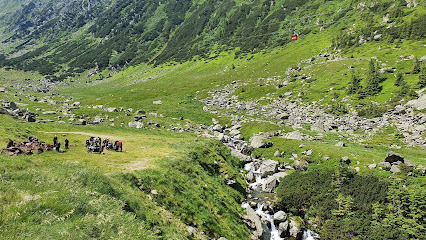
Capra Waterfall
Experience the breathtaking beauty of Capra Waterfall, a stunning natural gem in Romania, perfect for outdoor enthusiasts and nature lovers.
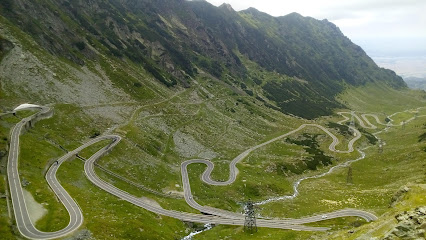
Vedere Panoramică Transfăgărășan
Discover the stunning vistas of the Transfăgărășan Observation Deck, where every angle offers a new perspective of Romania's breathtaking landscape.
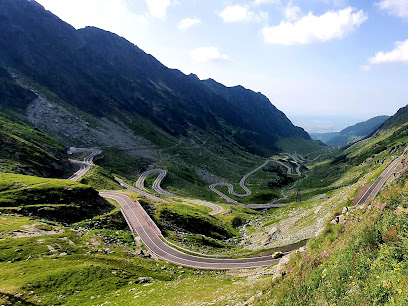
Cascada mică Capra
Experience the breathtaking beauty of Cascada mică Capra, a stunning waterfall nestled in Romania's Transfăgărășan mountain range.
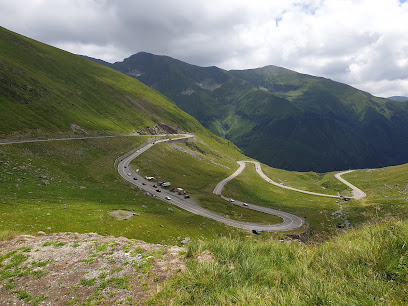
Poarta Întâlnirii
Experience the rich history and stunning mountain views at Poarta Întâlnirii, a captivating landmark along Romania's Transfăgărășan road.
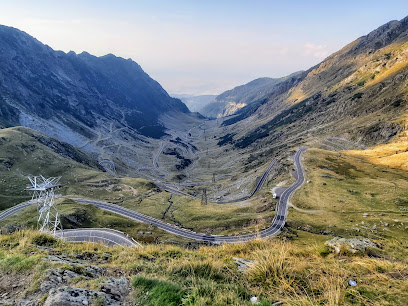
Start Fereastra Zmeilor
Discover the stunning landscapes and enchanting trails of Fereastra Zmeilor, a premier hiking destination in Romania's Transfăgărășan region.
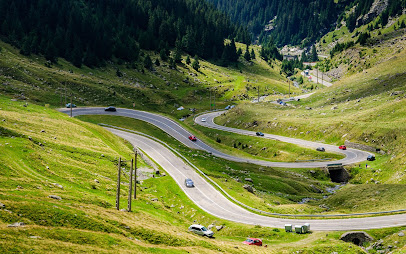
Transfăgărășan tunel
Explore the breathtaking Transfăgărășan Tunnel in Romania, where stunning mountain landscapes meet remarkable engineering.
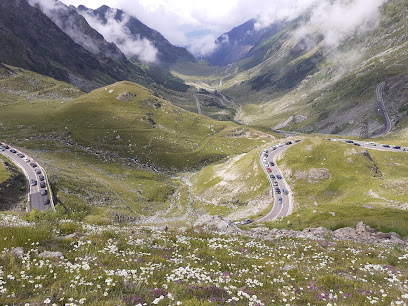
Belvedere Viaduct Cascada Călugărița
Discover the breathtaking views at Belvedere Viaduct Cascada Călugărita, a must-visit tourist attraction along Romania's picturesque Transfagarasan Highway.
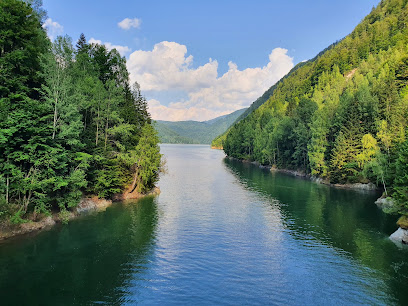
Panorama Transfăgărășan
Discover the breathtaking heights of Panorama Transfăgărășan, where stunning views and natural beauty await every traveler in Romania.
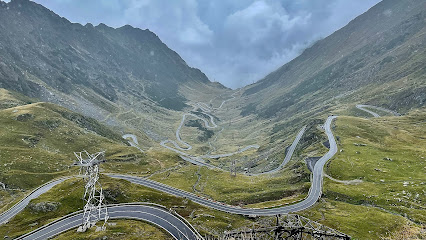
Transfăgărășan
Experience the breathtaking beauty of Transfăgărășan, one of the world's most scenic mountain roads in Romania, renowned for stunning views and thrilling drives.

Cascada Transfăgărășan
Experience the breathtaking beauty of Cascada Transfăgărășan, a stunning waterfall nestled in Romania's majestic Făgăraș Mountains.
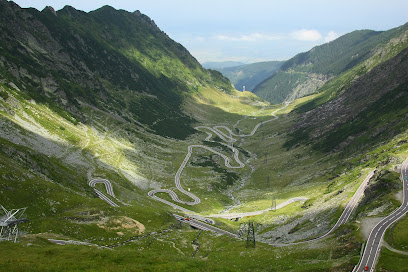
RwchLake view point
Discover the serene beauty of RwchLake View Point, a must-visit tourist attraction in Buda, offering breathtaking views and tranquil surroundings for every traveler.
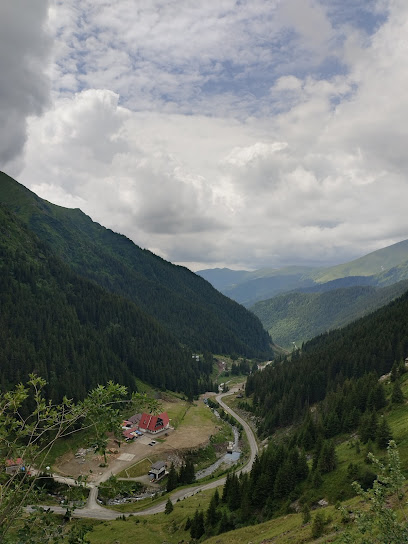
Meteorological Station Balea Lac
Explore the natural beauty and stunning views at Meteorological Station Balea Lac, a top tourist attraction in the Romanian Carpathians.
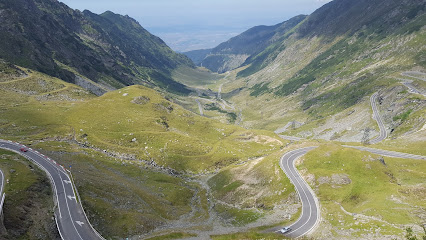
Magarusii prietenosi de pe Transfagarasan
Experience the heartwarming charm of friendly donkeys amidst the stunning landscapes of Transfagarasan, a unique stop for every traveler.
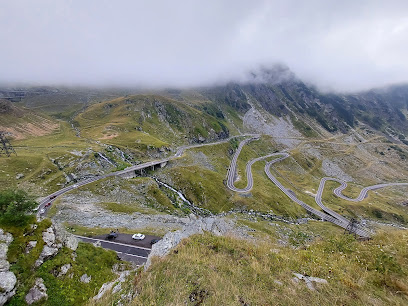
Tiroliana Balea Lac
Experience the breathtaking beauty and thrilling adventures at Tiroliana Balea Lac, nestled in the scenic Carpathian Mountains of Romania.
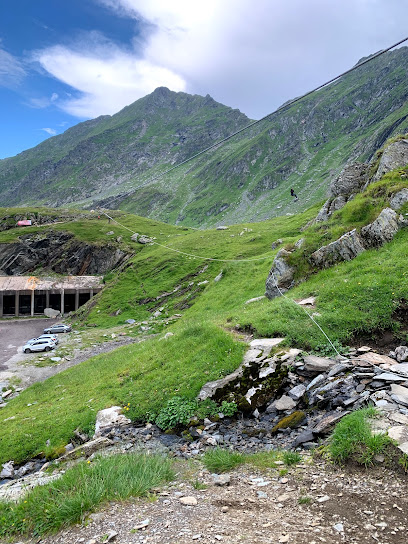
Unmissable attractions to see
Transfagarasan
Explore the breathtaking Transfagarasan, a stunning mountain road in Romania, where adventure meets breathtaking natural beauty.
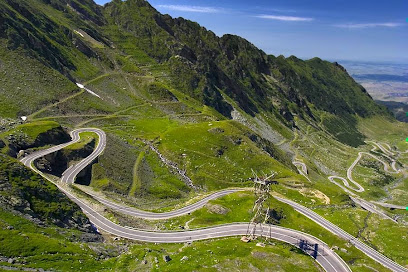
Astra National Museum Complex
Discover Romania's cultural heritage at the Astra National Museum Complex, an expansive ethnographic museum in the heart of Sibiu.
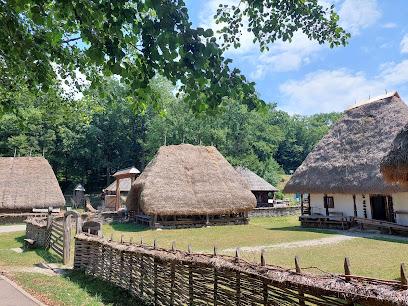
Transfăgărășan tunel
Experience the breathtaking Transfăgărășan Tunnel, a stunning journey through Romania's Carpathian Mountains, combining natural beauty and engineering marvel.
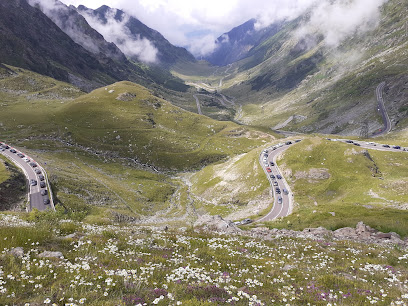
Fereastra Zmeilor
Explore the enchanting Fereastra Zmeilor, a hiker's haven in Romania's Carpathian Mountains, rich in beauty, folklore, and adventure.
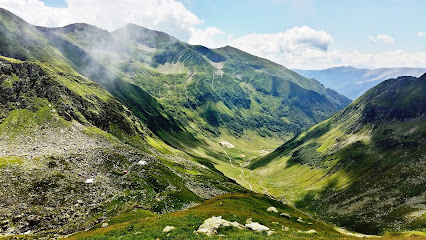
Prometheus Statue
Explore the stunning Prometheus Statue in Arefu, Romania, where art, mythology, and breathtaking landscapes converge in an unforgettable experience.
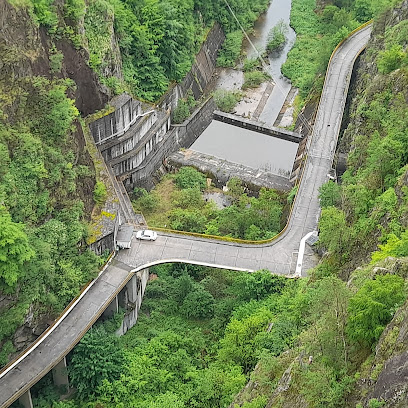
Nico Sibiu Guide
Experience the beauty and history of Sibiu with expertly guided tours by Nico Sibiu Guide, your gateway to the heart of Transylvania.

Sibiu Tourist Info Center
Explore Sibiu with ease at the Tourist Info Center, your essential guide to local attractions, events, and cultural experiences.

Nun's glade
Explore the serene beauty of Nun's Glade in Arefu, a perfect hiking destination for nature lovers and adventure seekers.
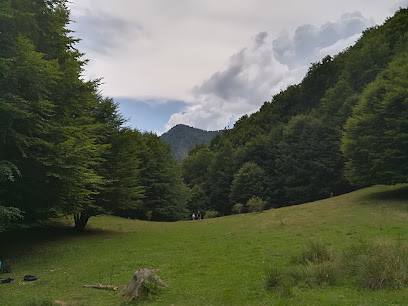
Lacul Vidraru
Explore the breathtaking beauty of Lacul Vidraru, a stunning man-made lake surrounded by the Carpathian Mountains, perfect for adventure and relaxation.
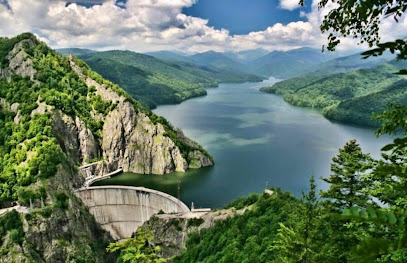
Prometheus Statue of Vidraru
Explore the Prometheus Statue of Vidraru, a cultural symbol amidst breathtaking landscapes in Romania's Transfăgărășan region.
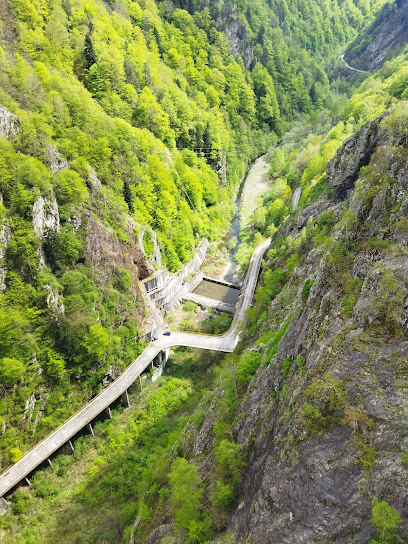
Point View
Discover the serene beauty of Point View in Comuna Albețitii de Argeș, a must-visit destination for nature lovers and tranquility seekers.
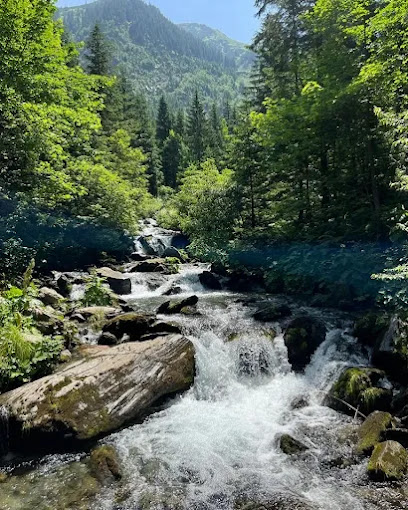
Parcul din Lemn
Discover Parcul din Lemn, a stunning Romanian park perfect for hiking, rock climbing, and outdoor adventure amidst breathtaking landscapes.
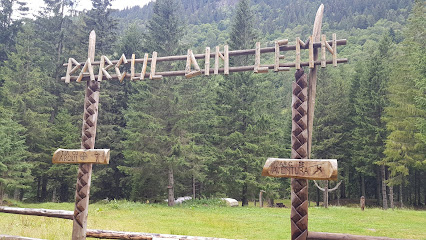
Fântâna lui George
Discover the serene beauty of Fântâna lui George, a picturesque oasis along Romania's breathtaking Transfăgărășan highway, perfect for nature lovers and adventurers.
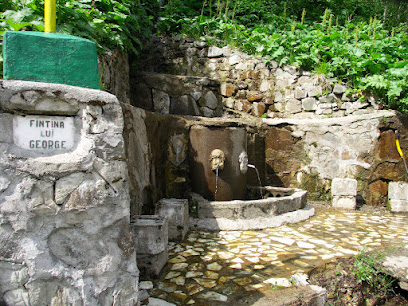
Romania
Experience the breathtaking landscapes of Transfăgărășan, one of Romania's most picturesque mountain roads, ideal for adventurers and nature lovers.
Frigul Moldoveanu
Explore Frigul Moldoveanu, Romania's highest peak, where adventure meets breathtaking landscapes and rich biodiversity in the Carpathian Mountains.
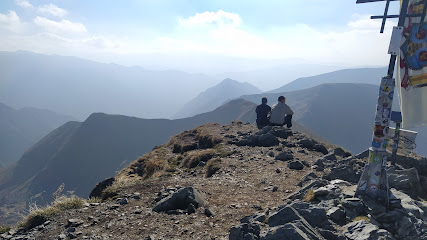
Essential places to dine
Transfagarasan
Explore the breathtaking Transfagarasan highway - a stunning mountain road filled with natural beauty and rich Romanian heritage.
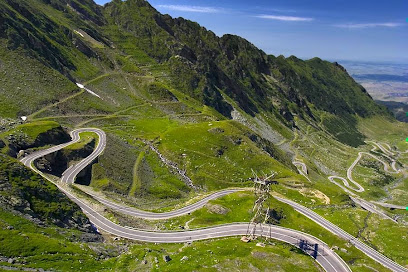
Albota, Trout Farm
Discover culinary delights and serene natural beauty at Albota Trout Farm – your perfect getaway in Romania.
Cascada Bâlea
Explore Cascada Bâlea: A breathtaking waterfall surrounded by stunning Carpathian landscapes - a must-visit for nature lovers.
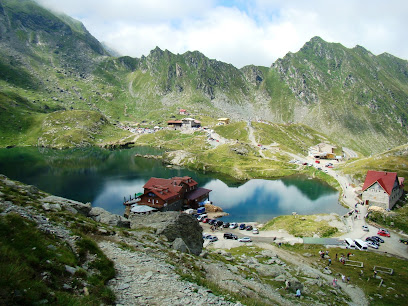
Cabana Bâlea Cascadă
Discover Cabana Bâlea Cascadă: A scenic restaurant and hotel nestled in Romania's breathtaking Transfăgărășan mountains.
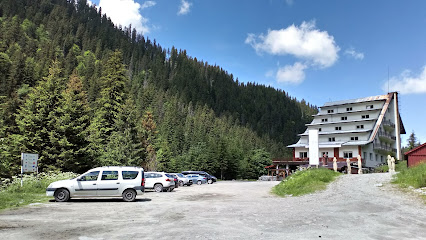
Hotel Posada Vidraru
Discover tranquility at Hotel Posada Vidraru with stunning views, gourmet dining, and rejuvenating spa services nestled by the picturesque Vidraru Dam.
Cabana La Cetate
Discover the breathtaking beauty of Romania at Cabana La Cetate—your mountain retreat on the scenic Transfăgărășan road.

Valea Cu Pești
Explore Valea Cu Pești: A Serene Valley Escape with Breathtaking Scenery and Authentic Romanian Hospitality.
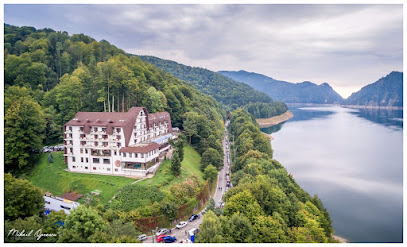
Cabana Bâlea Lac
Discover tranquility at Cabana Bâlea Lac - a serene bed & breakfast amidst breathtaking Transfăgărășan mountains with traditional Romanian cuisine.
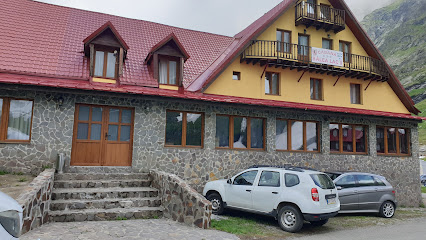
Complex Turistic Casa Lăzăroiu
Discover authentic Romanian flavors at Complex Turistic Casa Lăzăroiu in scenic Corbeni - a culinary gem amidst breathtaking landscapes.
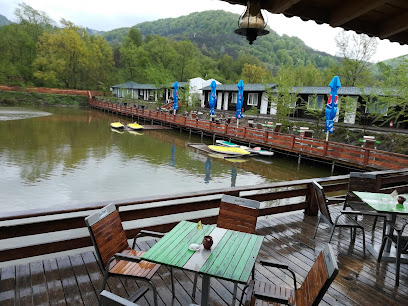
Chalet Bear Manor
Experience the beauty of Romania at Chalet Bear Manor - a serene guest house offering traditional hospitality amidst breathtaking mountain views.

Hotel Piscul Negru
Discover authentic Romanian flavors at Hotel Piscul Negru while surrounded by stunning mountain vistas along Transfăgărășan.
Bâlea Lac Pensiune
Discover Bâlea Lac Pensiune: A serene alpine retreat nestled in Romania's majestic Transfăgărășan Mountains, perfect for winter sports and nature lovers.

Restaurant La Cetate
Discover authentic Romanian flavors at Restaurant La Cetate on Transfăgărășan - where culinary tradition meets stunning mountain views.
Complex Bâlea
Experience authentic Romanian cuisine amidst breathtaking mountain views at Complex Bâlea – your ultimate escape in Transfăgărășan.
Alexandru's Royal
Experience authentic Romanian cuisine at Alexandru's Royal in Cârța – where tradition meets taste amid stunning landscapes.
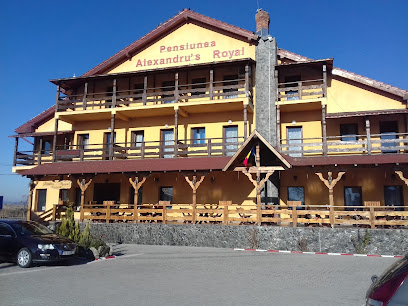
Markets, malls and hidden boutiques
Cascada Bâlea
Explore the breathtaking Cascada Bâlea, a stunning waterfall nestled in the Transfăgărășan mountains, perfect for nature lovers and adventure seekers.
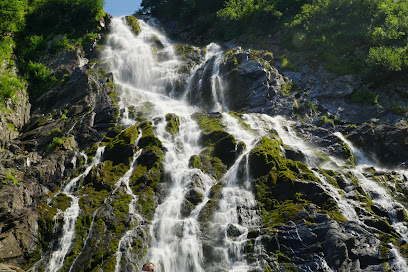
Capra Waterfall
Experience the awe-inspiring natural beauty of Capra Waterfall in Arefu, Romania, a stunning destination for nature lovers and adventure seekers alike.
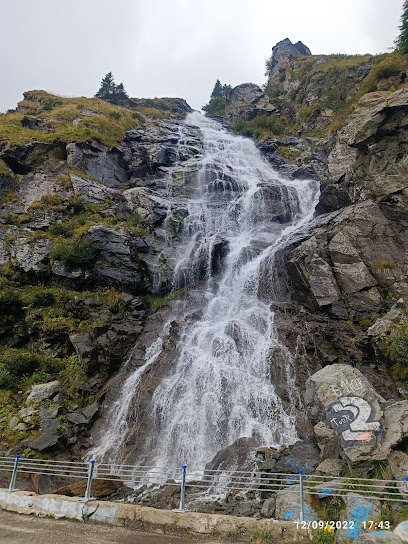
Carrefour Market
Explore local flavors and grocery essentials at Carrefour Market, the heart of Făgăraș shopping.
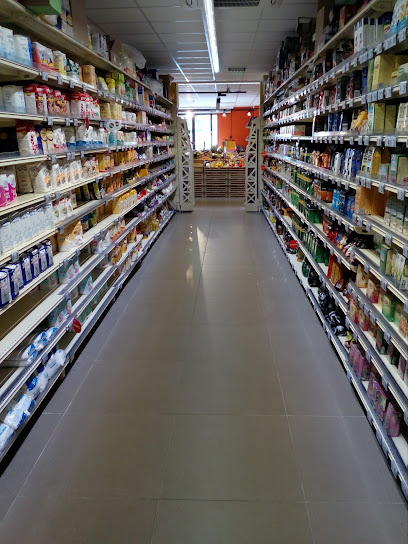
Sportisimo
Discover Sportisimo in Făgăraș, your go-to store for high-quality sports gear and stylish athletic apparel, perfect for every adventurer.

La Dolceria Boutique
Discover the sweetness of life at La Dolceria Boutique, Făgăraș's ultimate dessert destination for pastries, ice creams, and coffee.
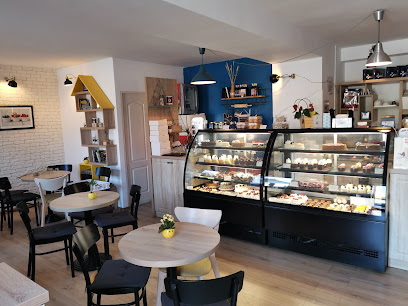
Prăvălie Sergiana
Explore the authentic flavors of Romania at Prăvălie Sergiana, a charming boutique offering traditional delicacies and local products in Făgăraș.

Computer' Shop Făgăraș
Explore Computer' Shop Făgăraș for expert tech solutions, quality products, and friendly service in the heart of Făgăraș.
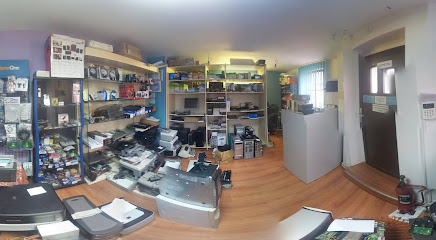
Popas cu bunătăți
Experience authentic Romanian cuisine at Popas cu bunătăți along the stunning Transfăgărășan, where nature and flavors meet.
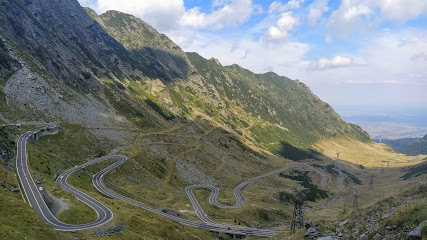
CANOE T’URS
Experience the thrill of paddling in Romania's stunning landscapes at Canoe T’urs - your adventure starts here!
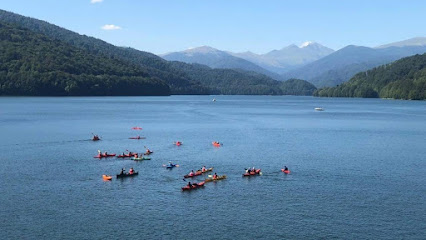
Humana
Uncover hidden treasures at Humana, Făgăraș's premier second-hand store, where sustainability meets style in every unique find.
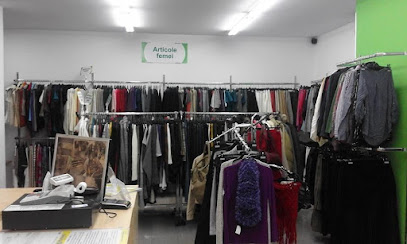
Piese de bicicletă & Articole pescuit Fagars
Discover top-quality fishing gear and bicycle accessories at Piese de bicicletă & Articole pescuit Făgăraș, your outdoor adventure hub in Făgăraș.
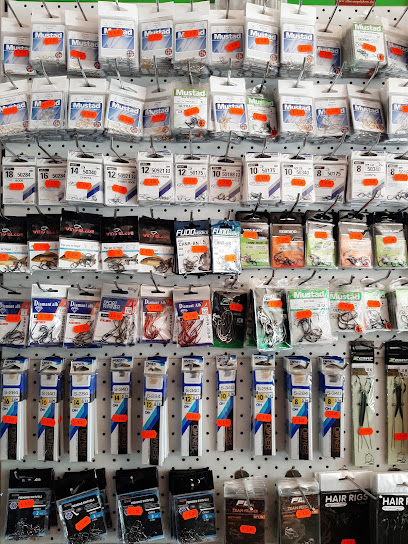
LeFruMarin
Explore LeFruMarin in Făgăraș for a unique organic shopping experience with fresh produce and local delicacies that promote sustainable living.
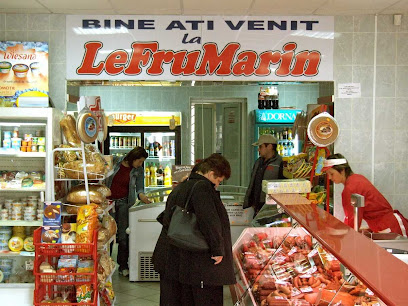
Magazin Negoiu
Discover the charm of Făgăraș at Magazin Negoiu, your go-to general store for authentic Romanian products and local treasures.
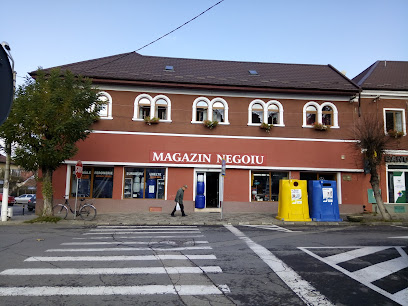
Magazinul de Produse Personalizate CREEAZA.RO
Explore unique personalized gifts at Magazinul de Produse Personalizate CREEAZA.RO, the perfect spot for memorable souvenirs in the city.

Ghici.shop
Discover unique gifts and local treasures at Ghici.shop, the perfect stop for tourists seeking memorable souvenirs.
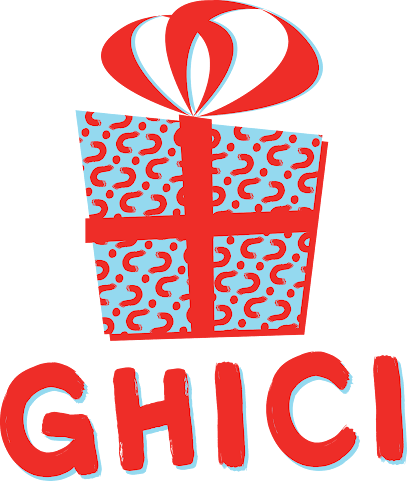
Essential bars & hidden hideouts
Cabana Bâlea Cascadă
Discover the enchanting Cabana Bâlea Cascadă, a perfect blend of nature, authentic Romanian cuisine, and cozy hospitality in the Făgăraș Mountains.
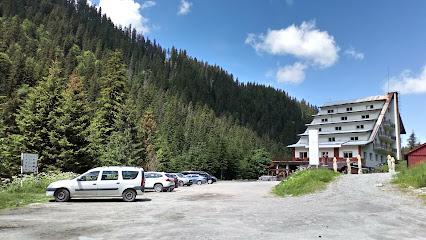
Chalet Bear Manor
Discover the serene beauty of Chalet Bear Manor, a charming guest house on the iconic Transfăgărășan road, surrounded by majestic mountains and rich wildlife.

Hotel Piscul Negru
Discover the unique blend of dining and leisure at Hotel Piscul Negru, your perfect mountain retreat along Romania's Transfăgărășan highway.
Restaurant La Cetate
Experience authentic Romanian cuisine with stunning mountain views at Restaurant La Cetate along the Transfăgărășan highway.
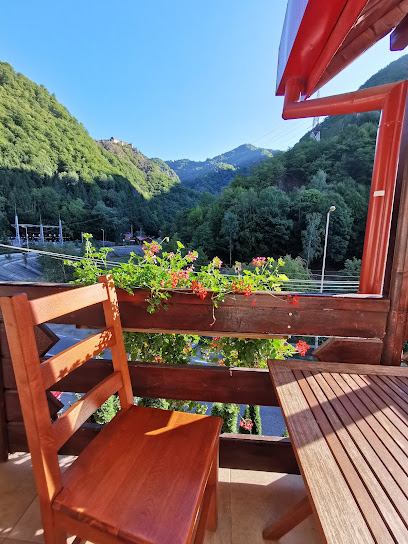
Complex Bâlea
Discover the stunning views and exquisite dining at Complex Bâlea, your perfect getaway in the heart of Transfăgărășan.
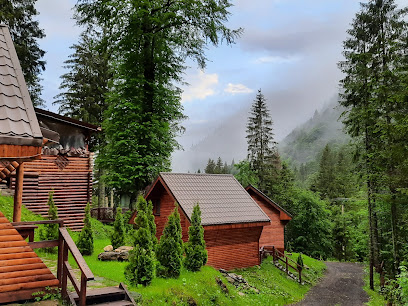
Colors Pub
Discover a lively dining experience at Colors Pub in Făgăraș, offering delicious grills, cocktails, and a warm atmosphere for every occasion.
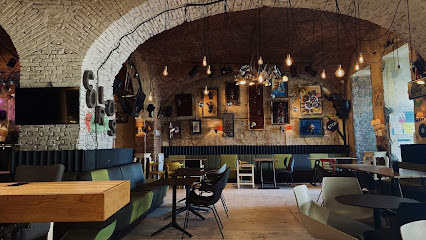
Transfagarasan Treehouse Village
Discover culinary delights amidst stunning landscapes at Transfagarasan Treehouse Village, a premier barbecue restaurant in Romania.
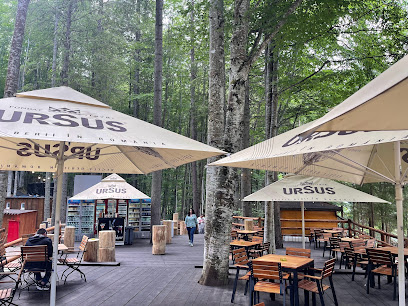
Cabana Paltinu
Experience the breathtaking views of Bâlea Lake while enjoying authentic Romanian cuisine at Cabana Paltinu, a gem on the Transfăgărășan.
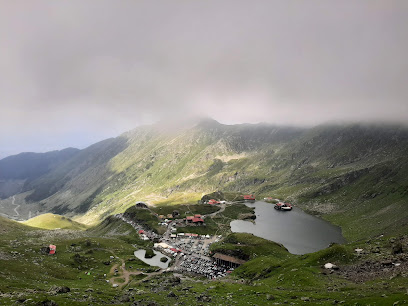
Bârlogul din Vidraru
Discover the enchanting Bârlogul din Vidraru, a restaurant and bed & breakfast offering authentic Romanian cuisine in a stunning natural setting.
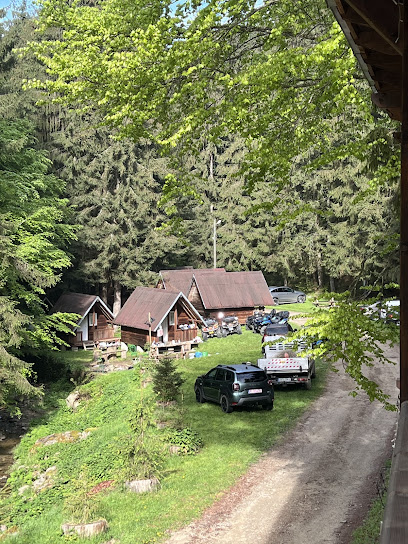
Twin Peaks
Experience the local flavors and cozy ambiance at Twin Peaks, the ideal pub in Curtea de Argeș for travelers seeking authentic Romanian cuisine.
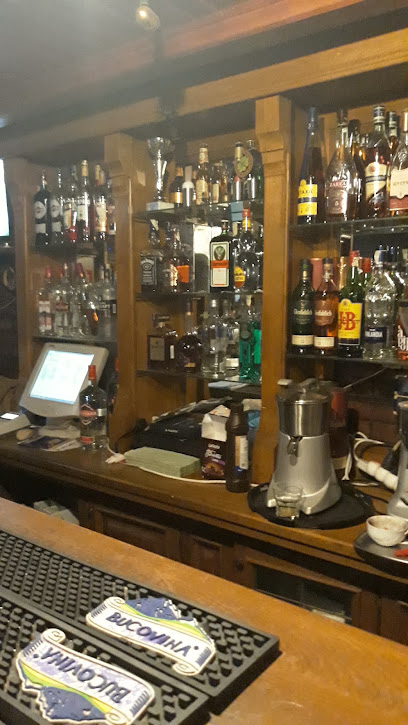
Terasa Zimbru
Experience the flavors of Romania at Terasa Zimbru, where delicious cuisine meets breathtaking views along the Transfăgărășan.

My Club Pub
Discover the lively My Club Pub in Curtea de Argeș, a perfect spot for karaoke, live music, and socializing with friends in a vibrant atmosphere.
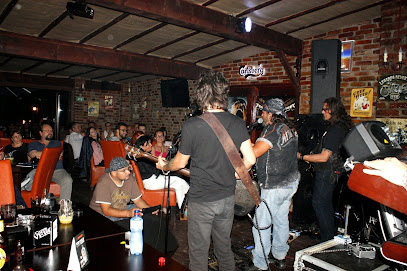
Gheretă
Experience authentic Romanian cuisine at Gheretă, a culinary haven nestled in the breathtaking Transfăgărășan region, perfect for food lovers and travelers.
La Casute
Discover La Casute, a charming bar on the scenic Transfăgărășan highway, combining relaxation with breathtaking views and local flavors.
Student Pub
Experience the lively nightlife at Student Pub in Curtea de Argeș, where drinks, music, and great company await you.
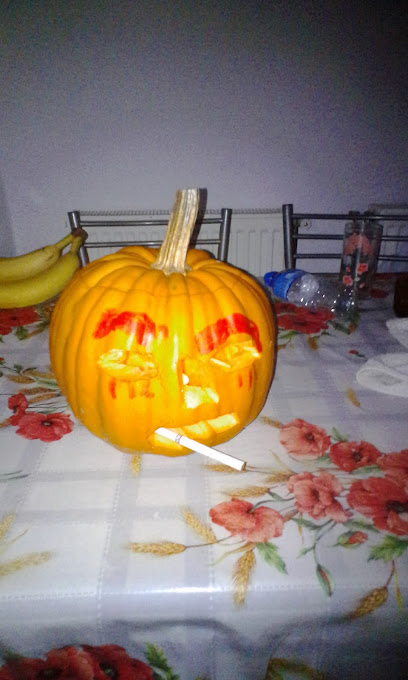
Local Phrases about Transfagarasan Highway
-
- HelloSalut
[sah-loot] - GoodbyeLa revedere
[lah re-ve-de-re] - YesDa
[dah] - NoNu
[noo] - Please/You're welcomeTe rog
[teh rohg] - Thank youMulțumesc
[mool-tsoo-mesk] - Excuse me/SorryScuzați-mă
[skoo-za-tsi mah] - How are you?Ce mai faci?
[cheh my fahch?] - Fine. And you?Bine. Și tu?
[bee-neh. shee too?] - Do you speak English?Vorbiți engleză?
[vor-beetsee en-glez-uh?] - I don't understandNu înțeleg
[noo in-tseh-leg]
- HelloSalut
-
- I'd like to see the menu, pleaseAș dori să văd meniul, vă rog
[ush doh-ree suh vuhd meh-nyool, vuh rohg] - I don't eat meatNu mănânc carne
[noo muh-nuhnk cahr-neh] - Cheers!Noroc!
[no-rok] - I would like to pay, pleaseAș dori să plătesc, vă rog
[ush doh-ree suh pluh-tesk, vuh rohg]
- I'd like to see the menu, pleaseAș dori să văd meniul, vă rog
-
- Help!Ajutor!
[ah-yoo-tor] - Go away!Du-te!
[doo-teh] - Call the Police!Sunați poliția!
[soo-nahts po-lee-tsia] - Call a doctor!Sunați un doctor!
[soo-nahts oon dohk-tor] - I'm lostM-am rătăcit
[mahm ruh-tuh-cheet] - I'm illSunt bolnav
[soont bohl-nav]
- Help!Ajutor!
-
- I'd like to buy...Aș dori să cumpăr...
[ush doh-ree suh koom-puhr] - I'm just lookingDoar mă uit
[doh-ahr muh ooyt] - How much is it?Cât costă?
[kuht koh-stuh?] - That's too expensiveEste prea scump
[eh-steh preh-ah skoomp] - Can you lower the price?Puteți să scădeți prețul?
[poo-tehtsuh suh skuh-dehts prehtsool?]
- I'd like to buy...Aș dori să cumpăr...
-
- What time is it?Cât este ceasul?
[kuht yeh-steh chah-sool] - It's one o'clockEste ora unu
[eh-steh oh-rah oo-noo] - Half past (10)Zece și jumătate
[zeh-cheh shee joo-muh-tah-teh] - MorningDimineața
[dee-mee-nyah-tsah] - AfternoonDupă-amiază
[doo-puh ah-mee-ah-zah] - EveningSeara
[seh-ah-rah] - YesterdayIeri
[yeh-ree] - TodayAstăzi
[ah-stuhz] - TomorrowMâine
[muh-yeh-neh] - 1Unu
[oo-noo] - 2Doi
[doy] - 3Treisprezece
[treh-ees-preh-zeht-cheh] - 4Patru
[paht-roo] - 5Cinci
[cheen-chee] - 6Șase
[shah-seh] - 7Șapte
[shahp-teh] - 8Opt
[opt] - 9Nouă
[noo-ah] - 10Zece
[zeh-cheh]
- What time is it?Cât este ceasul?
-
- Where's a/the...?Unde este unul/una...?
[oon-deh yeh-steh oo-noo/oo-nah] - What's the address?Care este adresa?
[cah-reh yeh-steh ah-dreh-sah] - Can you show me (on the map)?Puteți să-mi arătați (pe hartă)?
[poo-tehtsuh suh-mee ah-ruhtah-tsuh (peh hahr-tah)] - When's the next (bus)?Când vine următorul (autobuz)?
[kuhnd vee-neh oor-muh-toh-rool (ow-toh-booze)] - A ticket (to ....)Un bilet (spre ....)
[oon bee-let (spreh)]
- Where's a/the...?Unde este unul/una...?
History of Transfagarasan Highway
-
The Transfagarasan Highway, also known as DN7C, was constructed between 1970 and 1974 under the regime of Nicolae Ceaușescu. It was originally conceived as a strategic military route to ensure quick military access across the Carpathian Mountains in case of a Soviet invasion. The construction involved the use of military personnel and was considered a monumental engineering feat due to the harsh, mountainous terrain.
-
Spanning 90 kilometers (56 miles), the Transfagarasan Highway ascends to an altitude of 2,042 meters (6,699 feet) at its highest point, making it one of the highest paved roads in Romania. The highway includes 27 viaducts and bridges, along with a 900-meter-long tunnel—the longest in Romania—that passes under the Paltinu Ridge. The road's intricate design includes numerous hairpin turns and S-curves, showcasing impressive engineering prowess.
-
Beyond its strategic and engineering aspects, the Transfagarasan Highway holds cultural significance. It connects the historical regions of Transylvania and Wallachia, offering travelers a journey through Romanian history and folklore. The road passes near the Poenari Castle, associated with Vlad the Impaler, the real-life inspiration for the Dracula legend. This proximity offers a glimpse into Romania's medieval past and its storied legends.
-
The Transfagarasan Highway traverses the Fagaras Mountains, part of the Southern Carpathians, which are known for their stunning natural beauty and rich biodiversity. The area is home to diverse flora and fauna, including endangered species such as the Carpathian lynx, brown bear, and European wolf. Along the route, travelers can witness breathtaking landscapes, glacial lakes like Bâlea Lake, and cascading waterfalls.
-
The construction of the Transfagarasan Highway significantly impacted local communities, providing better access to remote areas and boosting tourism. However, it also brought challenges, including environmental concerns and the displacement of some local populations. Over time, the highway has become a vital lifeline for local economies, offering opportunities for tourism-related businesses and fostering regional development.
-
Today, the Transfagarasan Highway is renowned as one of the most scenic drives in the world, attracting tourists, cyclists, and driving enthusiasts. It gained international fame after being featured in the British television show 'Top Gear,' where it was described as 'the best driving road in the world.' This recognition has cemented its status as a must-visit destination for travelers seeking adventure and breathtaking scenery.
Transfagarasan Highway Essentials
-
Transfagarasan Highway is located in Romania, stretching between the regions of Transylvania and Wallachia. The nearest major city is Sibiu, which has an international airport (Sibiu International Airport). From Sibiu, you can rent a car or take a bus to the highway. Alternatively, Bucharest, the capital of Romania, is about 200 kilometers away and offers more international flight options. From Bucharest, you can also rent a car or take a train to Curtea de Argeș, then proceed by bus or taxi to the highway.
-
While the most convenient way to explore the Transfagarasan Highway is by car, there are also options for guided tours if you prefer not to drive. Public buses run from nearby towns like Sibiu and Curtea de Argeș, but they may not cover the entire length of the highway. For a more flexible and comprehensive experience, renting a car is highly recommended. Keep in mind that the highway is typically only open from late June to early October due to snow.
-
The official currency in Romania is the Romanian Leu (RON). Credit and debit cards are widely accepted in hotels, restaurants, and larger shops along the highway. However, it is advisable to carry some cash for smaller establishments, roadside vendors, and in case of emergencies. ATMs are available in major towns like Sibiu and Curtea de Argeș, but they are scarce along the highway itself.
-
The Transfagarasan Highway is generally safe for tourists. However, be cautious while driving as the road can be challenging with sharp turns and steep inclines. Wildlife, such as bears, may occasionally wander onto the road, so drive carefully. There are no specific high-crime areas targeting tourists, but it is always wise to stay vigilant, especially in crowded places and popular tourist spots. Avoid leaving valuables in your car unattended.
-
In case of emergency, dial 112 for immediate assistance. This number can be used for police, medical, and fire emergencies. Along the highway, there are several mountain rescue stations and first aid points. Make sure to have a fully charged mobile phone and carry a first aid kit. It is also recommended to have travel insurance that covers medical emergencies and outdoor activities.
-
Fashion: Do wear comfortable clothing and sturdy shoes suitable for hiking if you plan to explore the surrounding areas. Dress in layers as the weather can change rapidly in the mountains. Religion: Do respect local religious customs when visiting monasteries and churches. Cover your shoulders and knees. Public Transport: Do use public transport respectfully. Offer your seat to elderly passengers. Greetings: Do greet people with a friendly 'Bună ziua' (Good day). A handshake is common among acquaintances. Eating & Drinking: Do try local Romanian dishes and accept food offerings graciously. Don't refuse hospitality as it is considered impolite.
-
To experience the Transfagarasan Highway like a local, start your journey early in the morning to avoid heavy tourist traffic. Stop at the Vidraru Dam and take a boat ride on the Vidraru Lake for a unique perspective. Visit the Poenari Fortress, known as the real Dracula’s Castle, for a dose of history. Engage with locals at roadside markets where you can buy fresh produce, honey, and traditional Romanian crafts. Don't miss out on tasting local cheeses and meats, often sold by villagers along the route.
Trending Landmarks in Transfagarasan Highway
-
Cascada Bâlea
-
Capra Waterfall
-
Vedere Panoramică Transfăgărășan
-
Cascada mică Capra
-
Poarta Întâlnirii
-
Start Fereastra Zmeilor
-
Transfăgărășan tunel
-
Belvedere Viaduct Cascada Călugărița
-
Panorama Transfăgărășan
-
Transfăgărășan
-
Cascada Transfăgărășan
-
RwchLake view point
-
Meteorological Station Balea Lac
-
Magarusii prietenosi de pe Transfagarasan
-
Tiroliana Balea Lac
Nearby Cities to Transfagarasan Highway
-
Things To Do in Sighisoara
-
Things To Do in Brasov
-
Things To Do in Pitesti
-
Things To Do in Târgu Jiu
-
Things To Do in Deva
-
Things To Do in Cluj-Napoca
-
Things To Do in Craiova
-
Things To Do in Bucharest
-
Things To Do in Drobeta-Turnu Severin
-
Things To Do in Focsani
-
Things To Do in Ruse
-
Things To Do in Baia Mare
-
Things To Do in Pleven
-
Things To Do in Suceava
-
Things To Do in Arad

